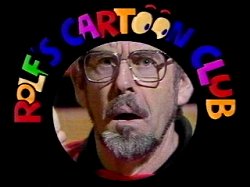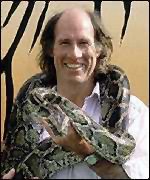 RAINBOW BRITE AND THE COLOR KIDS
RAINBOW BRITE AND THE COLOR KIDS
Made by: DiC Entertainment/Starry Night Productions
Shown on: ITV
Years shown: early-mid 80s
If you are the kind of person who is easily nauseated, it is advisable that you skip this and move straight on to The Really Wild Show. Rainbow Brite was a cross between The Care Bears and The Flower Fairies, and it was execrably and unequivocally awful. Also, in a worrying trend among American cartoons, it was based on a series of Hallmark greetings cards. The story was that a girl called Wisp stumbles across a place called Rainbowland, and decides she wants to save it from The Dark One, who has turned it into a dark, gloomy, colourless place. She is given the task of finding the Color Belt and the Sphere of Light, and while on her crusade she befriends a sprite called Twink, and a pony called Starlite, who she rescues from imprisonment in ice. Wisp also finds a baby, who, as luck would have it, turns out to be the sought after Sphere of Light. With me so far? Anyway, she somehow hears the pleas of the Color Kids, who have been banished to the far reaches of the world, and sets out to rescue them. Once they are released, she squares up to the Dark One. Her mission complete, the Color Kids give her the name Rainbow Brite - they each represent a colour of the rainbow, and are responsible for allocating everything in the world the right colours, while she wears multi-colours and has supreme rule over them all. She also had some sickening pets called Puppy Brite and Kitty Brite. Ho hum. The kids were: self-styled romeo, Red Butler; Lala Orange, who fancies Red; basin-haired Canary Yellow; Patty O’Green, whose pants were visible under her dress; macho jock, Buddy Blue; pretentious and artistic Indigo; and introverted Shy Violet, who looked like someone’s granny. Each of the kids had their own fuzzy sprite too, who they got to do all the dirty-work, mining the Color Crystals in the Color Caves; their names were Romeo, OJ, Spark, Lucky, Camp, Hammy and IQ. Rainbow Brite’s sprite, Twink, was white because he was once thrown into the Pits (should have felt at home there, considering the general standard of the cartoon), and had all the colour drained from him. Ha ha.
Unfortunately, it doesn’t end there. The resident bad guy was Murky Dismal, a squat, grey little man with a temper; and his sidekick was Lurky Dismal, a brown, furry thing with a big nose and red trainers, who was extremely dim and gullible. Mrs Dismal, Murky’s matronly, handbag-toting mother, also appeared from time to time. The Dismals all worked for the Evil Princess, who wore black spandex and had a shock of hair like Bonnie Tyler’s, only pillar-box red; she loved jewels, and her purpose was to gain control of the planet Spectra, which was covered in diamonds. Her domain was guarded by Count Blogg, a corpulent, green-hued man with an outlandishly-shaped white beard and an orange robe. Somewhere in this corrupt hierarchy was Sergeant Zombo, the knight who ran the prison planet.
Okay, I can see the end in sight. Among the marginal characters who cropped up now and again were Stormy, a stroppy girl who controlled the storms with her horse Skydancer, and would help out the Color Kids; Moonglo, a girl who brightens the night sky, and owns a Nite Sprite; Tinkled Pink, who just seemed to love pink; Krys, a sexist space-cowboy type, who loves himself, and rides an electric horse called On-X; Orin, a sprite from Spectra, who united Krys and the Color Kids; Wajah, a seemingly German-speaking grey alien whose species gain their energy from colour, and who crash-landed in Rainbowland; and Plock, an entrepreneur who initially wanted the Color Caves, but then gave them up for a good cause. Someone pass me a paper bag. Finally, there was Brian, a boy from earth who accidentally ended up in Rainbowland when he walked through a rainbow; Rainbow Brite then gave him a key, so he could return whenever he wanted. I know what I would have done with it…
SQUARE EYES RATING: 1/10
(Thanks to www.lilbb3.tripod.com for the borrowed pic)





